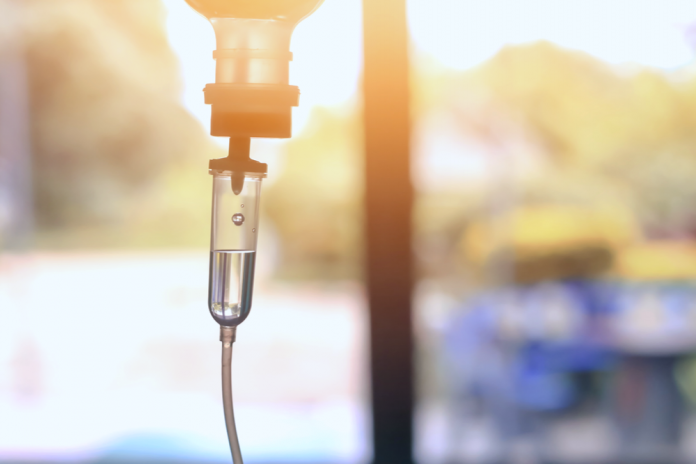First, we had superfood kale smoothies. Then, keto stomped into the nutrition world. What’s the next trendy “food” fad? None other than IV nutrition therapy.
Sometimes referred to as IV vitamin therapy, proponents of this technique claim that vitamins administered intravenously are more readily absorbed than when consumed orally in the form of food or supplements.
Take a look at the claims concerning IV nutrition and vitamin IV therapy.
What Is IV Nutrition Therapy?
Similar to IV hydration therapy, the IV nutrition therapy available to the public includes drips of an intravenous infusion of vitamins, minerals, and/or amino acids typically administered at a wellness or medical clinic. This essentially means a more concentrated amount of nutrients bypass the digestive system. How is this a potential advantage?
To fully understand the potentially advantageous benefit, one needs to understand gut health. Gut health generally refers to the diversity of bacteria residing in the gut and how it influences digestive functions.
For example, good gut health promotes better absorption of nutrients, whereas poor gut health can impede the actual absorption of vitamins, minerals, amino acids, and more. This means even if someone is technically consuming enough nutrition, they may not actually be absorbing it all.
This is where IV nutrition therapy exerts its functions. Since it bypasses the gut, the nutrition being provided in the IV drip goes right into the bloodstream where it is then transported to cells. Essentially, there is more and quicker opportunity for these nutrients to be delivered to the organs and tissues that need them most.
Potential Risks & Side Effects of IV Nutrition Therapy
It is important to note that current research does not necessarily back the touted benefits of IV nutrition.
In reality, there is little hard evidence accumulated from scientific studies and instead, much anecdotal claim. In various studies where one group was administered an IV of nutrition and another received a placebo, both groups reported feeling better. Experimenters reasoned that sufficient or enhanced hydration from the water could be to thank.
Plus, many of the most popular vitamins administered are B’s and C, which are water-soluble, meaning the body excretes what it does not need.
Not to mention, there is a risk of infection with IV vitamin treatments. Intravenous therapies bypass the skin barrier, making the body more susceptible to bacterial infection at the administration site especially. Although this risk is relatively unlikely, it is important to trust the clinic and ensure the treatment clinicians are properly qualified, certified, etc.
Perhaps the greatest risk of IV nutrition therapy is receiving too much of a good thing. Indeed, it is possible to “overdose” on fat-soluble vitamins and certain minerals. Whereas the B and C vitamins are readily excreted, the fat-soluble vitamins A, D, E, and K are stored in adipose (fat tissue). This means there is some risk of toxicity if the body receives and absorbs too much of them.
Minerals with the highest risk of toxicity include potassium, iron, copper, iodine, and other heavy metals like mercury and aluminum. People with underlying conditions that cannot properly filter certain vitamins and minerals, such as kidney disease or Wilson’s disease, are at the highest risk.
Other general (but typically unlikely) risks include:
- Blood clots
- Vein irritation
- Inflammation
- Air embolisms
- Fluid overload
Is IV Nutrition Therapy Here to Stay?
First of all, IV treatments are not exactly new. In fact, they have long been used in hospital settings to help patients rehydrate and restore severe nutrient deficiencies.
In some cases, IV treatments provide actual nutrition in the form of total parenteral nutrition (TPN). TPN is typically administered only when someone’s gut has little to no functional capability, aka in extreme situations.
So, how and why did nutrition IV therapy extend into the mainstream wellness world?
It was largely thanks to celebrities like Chrissy Teigen, Ariana Grande, Kim Kardashian, Cindy Crawford, and John Legend. Many celebrities swear by this expensive nutrition treatment to achieve everything from boosting the immune system to curing hangovers to beating jet lag to treating serious health issues. Yet, other proponents regularly visit IV clinics as part of their wellness routine to mitigate aging, boost brain activity, manage stress, and treat chronic conditions like fibromyalgia and Lyme disease.
Whatever the case, celebs with large social media followings popularized nutritional IV therapy that can cost between $150 – $400 and last 20 minutes to three hours depending on the intensity of the treatment.
Because of this, IV vitamin therapy is likely here to stay. Even if all this therapy does is properly hydrate individuals and induce a placebo effect of feeling generally better, so many influential people abide by it, which means it will likely remain. Just note that most prominent doctors and health professionals still exert that IV nutrition therapy is largely unnecessary for most people that can safely consume a healthy diet.
They, along with most dietitians, still encourage a vibrantly colored, healthful diet to obtain nutrients like vitamins, minerals, amino acids, and antioxidants. It is very possible to receive all the necessary nutrients and feel better with whole foods alone.
Like Hippocrates once said, “Let food be thy medicine.” Not an IV vitamin drip.
The Bottom Line
IV nutrition therapy consists of vitamins, minerals, and amino acids delivered via a hydration drip line. While popular amongst many celebs and the like, little scientific research backs such claims like magically curing hangovers or treating chronic conditions.
Nonetheless, it is fairly risk-averse and much anecdotal evidence claims it makes people feel much better. Therefore, it is really up to you whether you want to purchase nutrients for upwards of $200 or get some vibrant whole foods for $15-30 to achieve the same end goal!
References:
Healthline Wellness Team. A Review of IV Vitamin Therapy. Healthline. Updated April 10, 2019. www.healthline.com/health/under-review-IV-vitamin-therapy#In-your-opinion:-Does-it-work?-Why-or-why-not.
Lawler M. What Is IV Nutritional Therapy? Benefits, Risks, Celebs, More: Everyday Health. Reviewed February 11, 2021. www.everydayhealth.com/diet-nutrition/diet/what-iv-nutritional-therapy-benefits-risks-celebs-more/.









